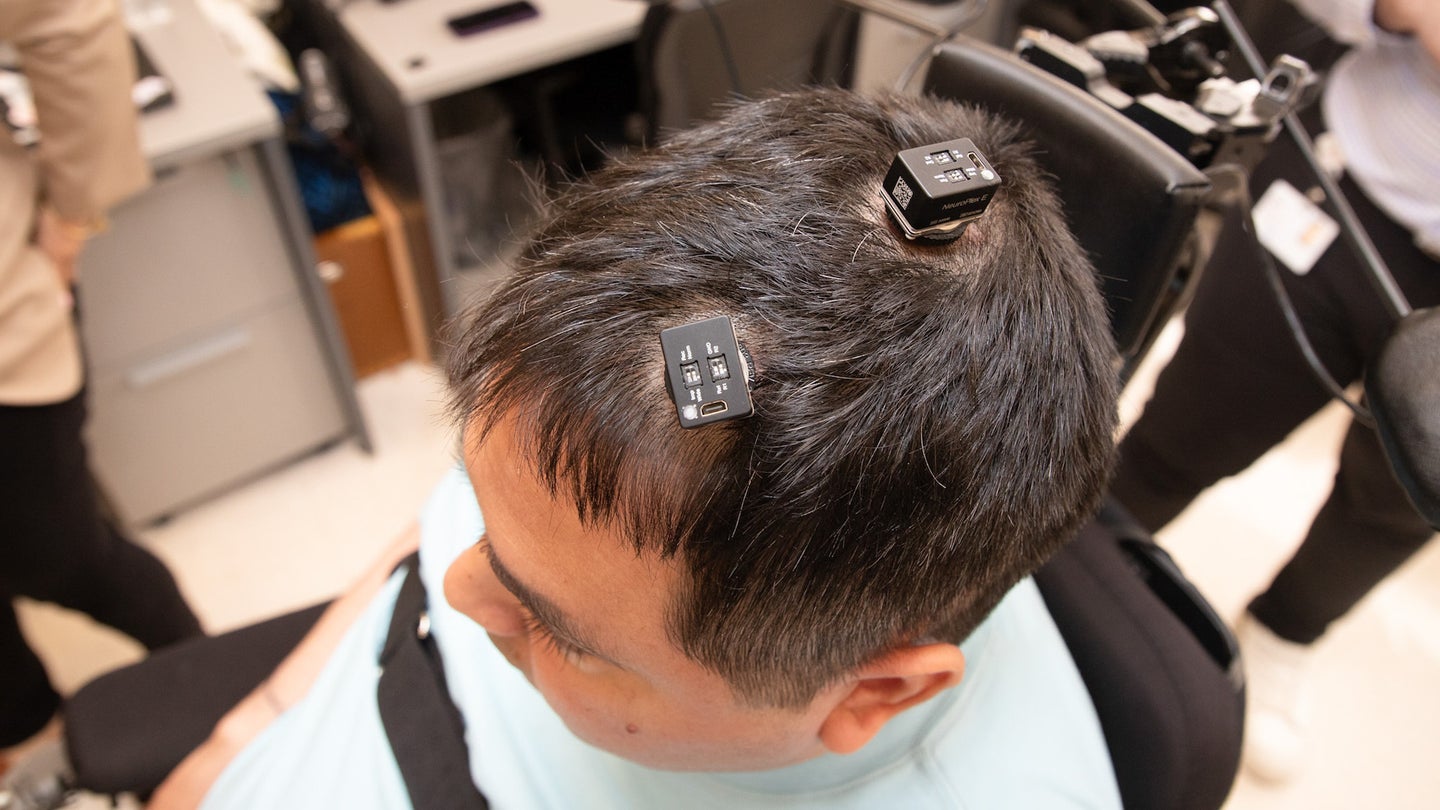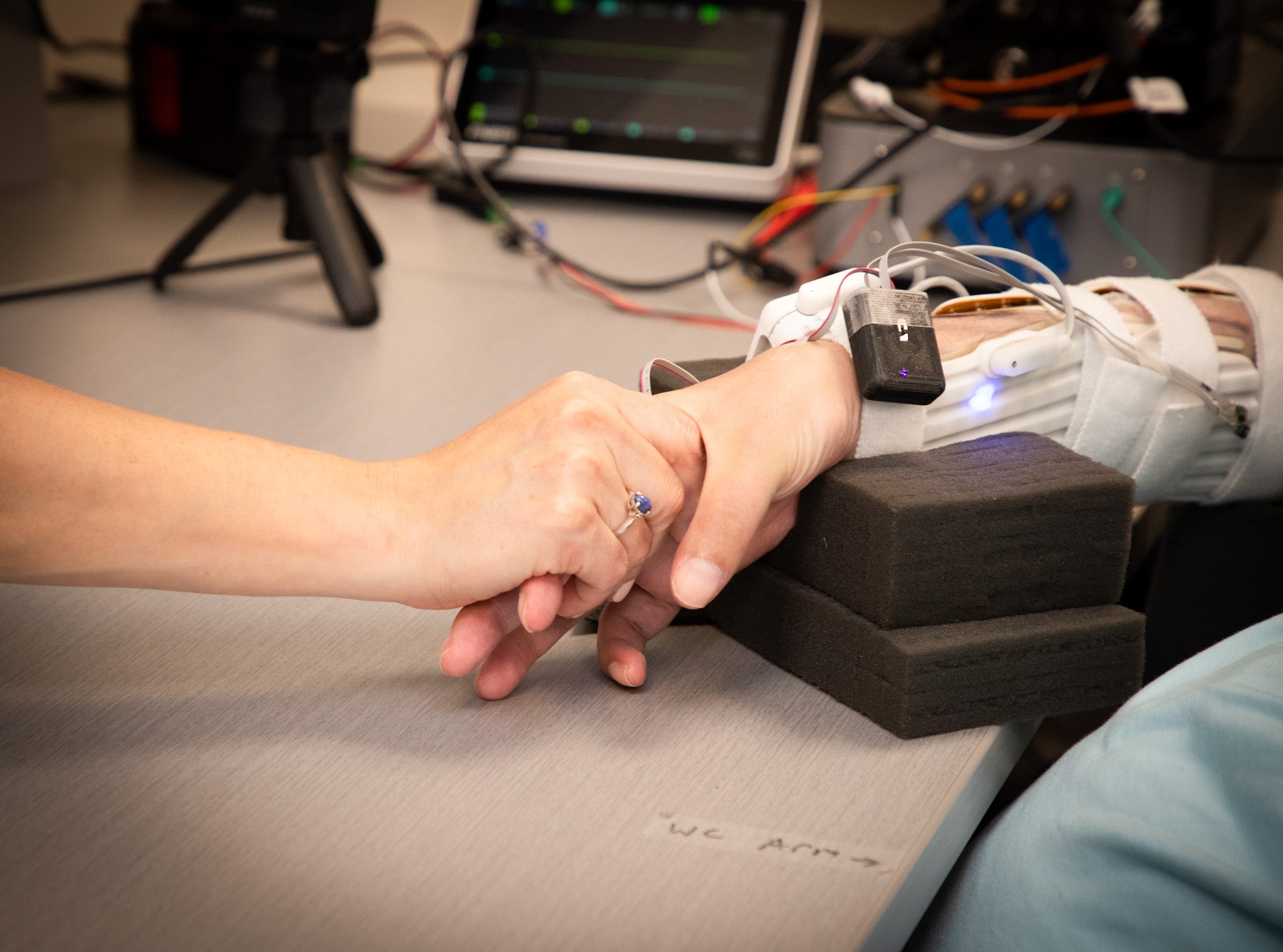
On July 18, 2020, a diving accident injured a man’s C4 and C5 vertebrae, resulting in a total loss of movement and sensation below his chest. After participating in a first-of-its-kind clinical trial, however, Keith Thomas is now regaining sensations and movement in his hands just months after receiving AI-enabled microchip brain implants. What’s more, he is experiencing lasting improvements to his wrist and arm functions outside of the lab setting, even after turning off the devices.
“This is the first time the brain, body and spinal cord have been linked together electronically in a paralyzed human to restore lasting movement and sensation,” Chad Bouton, a professor in the Institute of Bioelectronic Medicine at the Feinstein Institutes, the developer of the tech, and the trial’s principal investigator said in a statement in July. “When the study participant thinks about moving his arm or hand, we ‘supercharge’ his spinal cord and stimulate his brain and muscles to help rebuild connections, provide sensory feedback, and promote recovery.”
[Related: Neuralink human brain-computer implant trials finally get FDA approval.]
To pull off the potentially revolutionary rehabilitation, Bouton’s team at Northwell Health in New York first spent months mapping Thomas’ brain via functional MRIs, eventually locating the exact regions responsible for his arms’ movements, as well as his hands’ sensation of touch. From there, neurosurgeons conducted a 15-hour operation—some of which occurred while Thomas was awake—to properly place two chips to restart movement, and three more in the area controlling touch and feeling in his fingers.
The intense procedure also included the installation of external ports atop Thomas’ head, which researchers connected to an AI program used to interpret his brain activity into physical actions—a system known as thought-driven therapy. When the AI receives his mind’s inputs, it then translates them into signals received by non-invasive electrodes positioned over both his spine and forearm muscles to stimulate movement. Additional sensors placed atop his fingertips and palms additionally transmit pressure and touch data to the region of his brain designated for sensation.

After only four months of this therapy, Thomas regained enough sensation in his fingers and palm to hold his sister’s hand, as well as freely move his arms at more than double their strength prior to the trial. The team has even noted some astounding natural recovery, which researchers say could permanently reduce some of his spinal damage’s effects, with or without the microchip system in use.
The new technology’s implications are already extremely promising, says Northwell Health’s team, and show that it is possible to reforge the brain’s neural pathways without the use of pharmaceuticals. According to Thomas, his progress alone has already been life changing.
“There was a time that I didn’t know if I was even going to live, or if I wanted to, frankly. And now, I can feel the touch of someone holding my hand. It’s overwhelming,” Thomas said on July 28. “… If this can help someone even more than it’s helped me somewhere down the line, it’s all worth it.”
The post First-of-its-kind AI brain implant surgery helped a man regain feeling in his hand appeared first on Popular Science.
Articles may contain affiliate links which enable us to share in the revenue of any purchases made.
from | Popular Science https://ift.tt/IiTUmKc










0 Comments